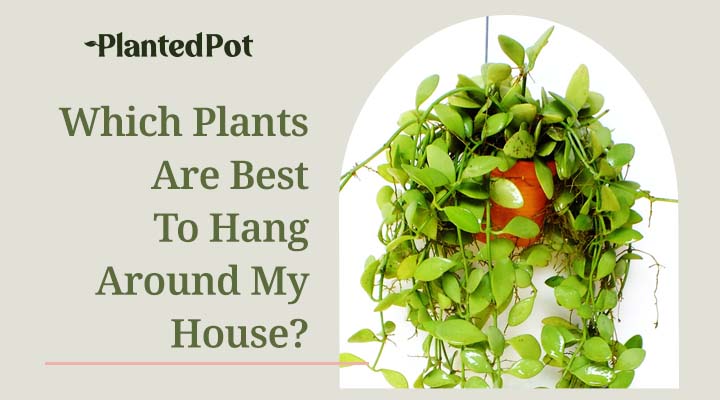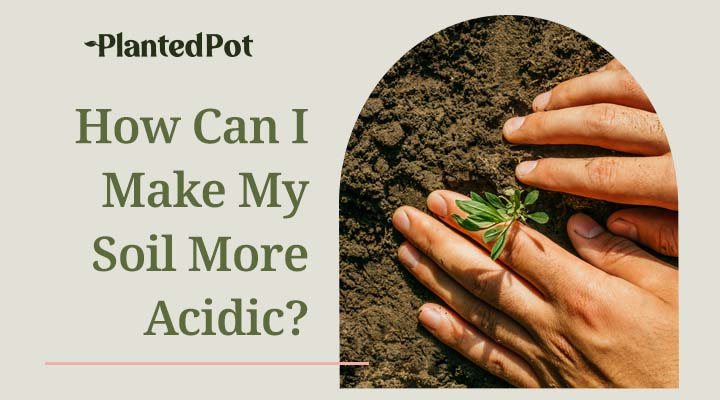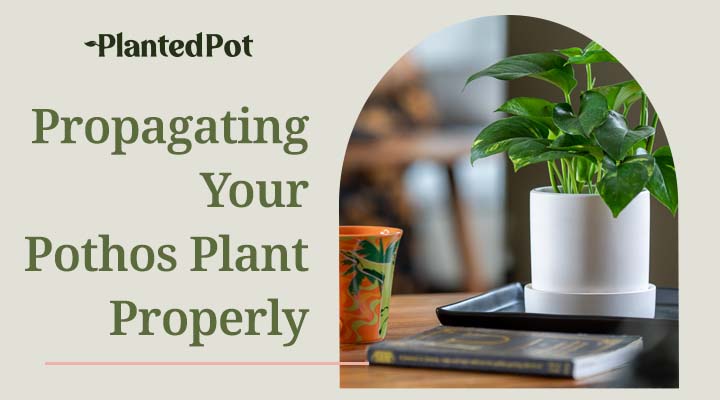
How To Get Rid Of Thrips: 5 Common Signs Of Plant Pests
Home / How To Get Rid Of Thrips: 5 Common Signs Of Plant Pests
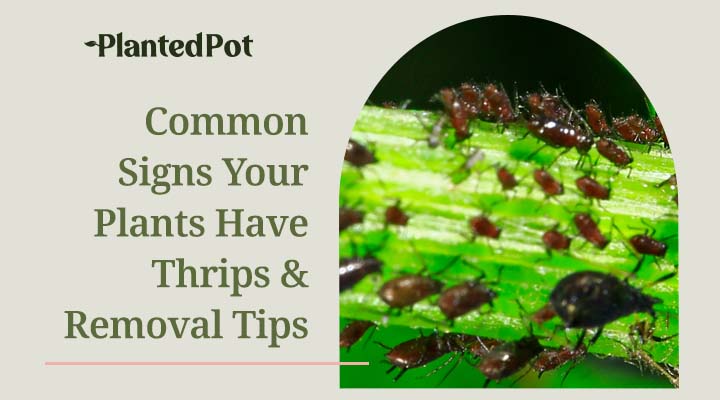
How To Get Rid Of Thrips: 5 Common Signs Of Plant Pests
- Rogelio Alvarez
- September 1, 2021
- 12:08 pm
- No Comments
Everyone is jumping on the houseplant trend because most indoor plants are inexpensive, easy to care for and provide people with plenty of joy. Homes look nicer and feel more welcoming when there is a collection of houseplants available. However, most of these plants attract the attention of pests. Pests may harm plants, which is why plenty of plant parents wonder how to get rid of thrips.
Thrips on houseplants may be annoying — it helps to know how to kill thrips and save your plants from further damage. It is best to know your plants’ enemies to better understand how to address an infestation. If you want to avoid dead plants in your home, read on further to learn more about what thrips are, how to get rid of them, and more!
What Are Thrips?
Thrips are tiny insects that feed off plants by sucking up their nutrients. Thrips are a genus of insects belonging to the insect order Thysanoptera with over four thousand types of thrips in the genus. Out of those thousands of insect pests, about two hundred thrips species are identified as harmful to outdoor and houseplants.
Here is some more information regarding Thrips:
- Physical Description: Thrips have cigar-shaped bodies and be either wingless or with four fringed wings. They can be either yellow, brown, or black.
- Unique Characteristics: Thrips have feathered wings that do not allow them full flight but can be carried through air currents. Thrips have a feature unique only to their species where their mouths are asymmetrical.
- Natural Habitat: Thrips can be found on every continent and can handle different weather conditions. They are capable of mass migration by traveling through the wind.
- Prey: The majority of thrips eat the nutrients of plants. Some thrips are beneficial insects that prey on other plant pests like mites and other small insects. Besides plants, some thrips species feed off blueberries, citrus fruits, avocados, tobacco, and other commercially grown crops.
- Size: Thrips are extremely tiny insects that grow between half a millimeter to over 10 millimeters big. Female thrips are larger than their male counterparts. Thrips are so small they can be easily seen with a magnifying glass.
- Reproduction: Female thrips produce asexually and cut silts in the leaves of the host plant to lay their eggs in. They lay several dozen eggs, which can take up to two weeks to hatch. Once the nymphs are born, they feed off the plant’s nutrients to grow and mature into adults.
- Life Cycle: Thrips can live up to an average of 45 days. Although it is not a long time, they can lay over one hundred eggs during their adulthood.
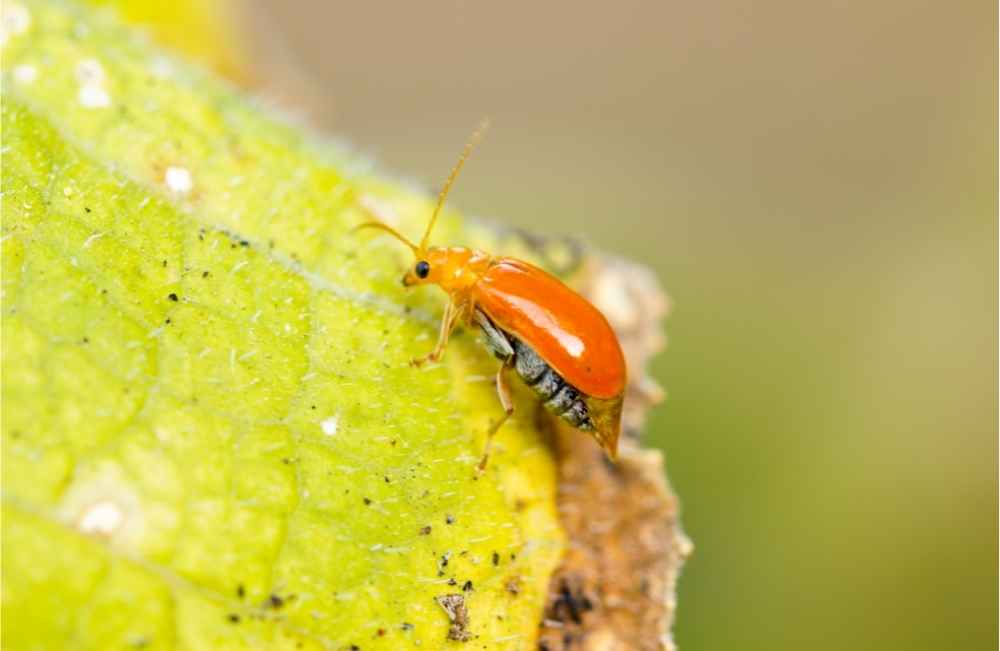
Are Thrips Common?
Thrips on houseplants are a common occurrence and are more likely to occur during the summertime. Infestations of thrips are more common during warmer weather. Here are the most common types of thrips found on indoor plants.
- Western Flower Thrips
- Tomato Thrips
- Tobacco Thrips
- Florida Flower Thrips
- Eastern Flower Thrips
- Onion Thrips
- Anthurium Thrips
Most plant parents have difficulty identifying thrips because of their small size and because it is difficult to tell each thrips species apart. Although these bugs are commonly referred to as thrips, they also go by the following nicknames, Thunderbugs, Thunderblights, Thunderflies, Corn fleas, Corn flies, Corn lice, and Harvest bugs.
How Do Thrips Develop on Plants?
Before thrips develop on plants, they need to find a host plant to feed up off. Thrips make their way to plants by being carried by the wind and landing on plants. Some houseplants get infested with thrips when plant owners bring home a new plant that might have been carrying the pest.
Once the pest lands on a plant, it can begin to feed and reproduce. Thrips lay their eggs and start hatching multiple generations of thrips. Female thrips have an organ known as an ovipositor to cut a tiny incision on a plant’s leaves, stems, petioles, or flowering buds to lay their eggs. If the weather is warm, the larvae hatch within two weeks. According to a study, thrips can lay eggs during the winter, but it can take 44 days for the large to hatch.
Stages of Thrips
Thrips go through different stages from egg to adult while they are developing on a plant. Here are the different stages it goes through:
- Egg: The eggs cannot be seen, but they might leave a discoloration on plants.
- Larvae: Also known as nymphs, larvae begin to feed on plant tissue immediately. It then enters two further stages called instar stages, where it continues to eat.
- Prepupal and Pupal: After consuming plant tissue for a few days, thrips fall and land in lower leaves or soil to enter a pupate stage where they transition start to mature into adulthood. During this stage, thrips can start to develop their fringed wings if the species has it.
- Adult: Once they reach adulthood, thrips continue to eat the plant’s nutrients. Some thrips are capable of mating, while some species reproduce asexually.
What Are Thrips Attracted To?
Thrips are attracted to warm weather, humidity, and any plant debris or compost piles. They enjoy consuming the sap from plants but are attracted to different fruits and flowers’ sweet flavors and aromas. Animals that eat up different parts of plants are known as phytophages.
Some species of thrips are attracted to pollen. A few trips are natural predators to other pests like mites. They are attracted to plants that have mite eggs and larvae to feast on it. The majority of thrips like to reside in the underside of leaves. They prefer plants with thick wide leaves. Once they make themselves at home on plants, they can cause all kinds of harm to plants.
Are Thrips Harmful to Plants?
The majority of thrips are harmful to plants. If an infestation is not addressed, plants can sustain damage. Infestations of thrips can potentially destroy harvests of crops.
Using their unique mouthparts, thrips use the left side of their mouths to cut into plant tissue. These plant pests then suck up the nutrient-rich plant juices. Whether they feed or lay eggs in your houseplants, the resulting damage leaves visible symptoms.
Common Symptoms
Plant parents do not realize they have a thrips problem until they notice the damage being done to their plants. The symptoms occur the moment these insect pests begin feeding on plant tissue. Here are symptoms caused by thrip infestation:
- Silver or white streaks across leaves
- Discoloration on leaves
- The appearance of dark feces from thrips
- Twisted or scarred leaves
- Stunted plant growth
- Leaves dying and prematurely falling off the plant
If you fail to notice or ignore the damage caused by thrips, your plants will eventually die. Western Flower thrips can also be carriers of the tomato spotted wilt virus and spread it to other plants. This virus causes leaves to decompose and die.
Research shows that thrips may spread the necrotic spot virus. Symptoms of this virus appear as little black dots on the leaves and may decimate an entire houseplant collection if it is not addressed.
Are Thrips Harmful to Humans or Pets?
Thrips are not fatally harmful to humans or pets but can still cause minor irritation on the area it bites. Unlike mosquitos, thrips do not transmit diseases or illnesses to pets and people.
If thrips bit you or your pet, you might experience minor symptoms. Itchiness may result from bite marks. In these areas, the skin may turn pink or red. The effects are temporary and is treatable through common bug bite ointment or with soap and warm water.
Some people and pets may have an allergic reaction to bug bites which can become more troublesome. If you or your pet display symptoms from an allergic reaction, consult your physician or contact your local animal hospital for further diagnosis.
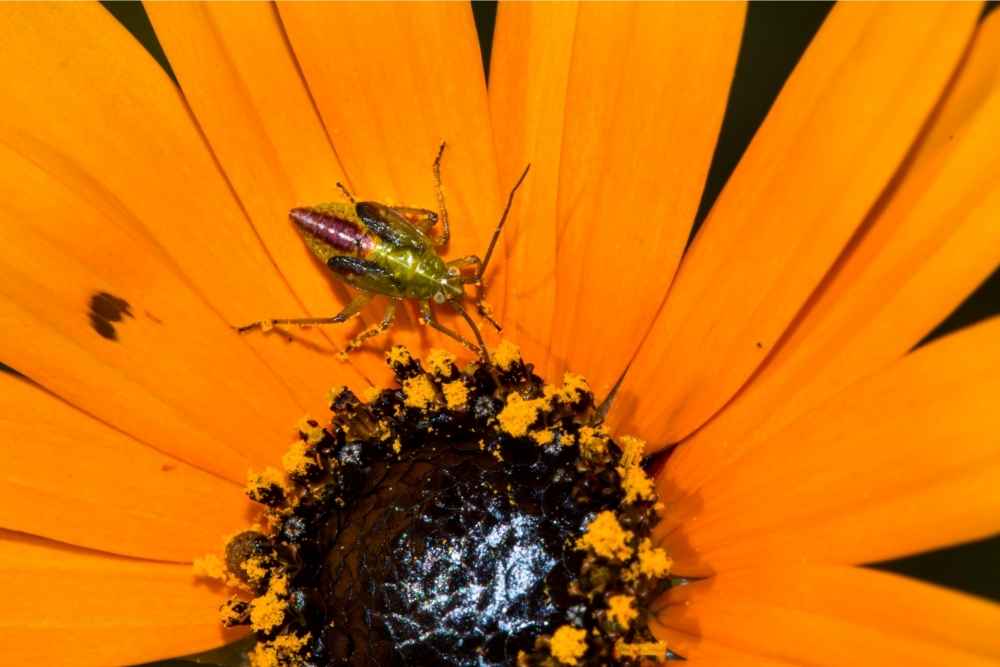
How to Get Rid of Thrips Naturally
There are several ways to rid of thrips naturally and chemically as well. Although we recommend natural remedies, people with large greenhouse gardens might require a premade formula. Whatever method your use, it should kill thrips.
Before you begin the process of ridding your plants of thrips, you must be able to confirm you have a thrips infestation. The best way to check for thrips is by placing your plant on white paper and giving it a gentle shake. If there are thrips or other pests, they should fall on the white paper and easily see them. Here are the different methods to help you get rid of thrips on houseplants:
Plant-derived Insecticides
Neem oil is a naturally occurring chemical found in neem trees. You can purchase a premade bottle or make your own by diluting neem oil with water in a spray bottle.
- Neem oil acts as a natural insecticide. Spray your houseplants with this formula to kill infestations of thrips and other pests.
- Pyrethrin is another natural insecticide from plants. It is safe to spread on your plants and organic as well.
Prune and Wash Damaged Plants
You can prevent further damage to your plants by pruning the leaves affected by thrips. Cutting off and pruning damaged leaves can help manage a thrips infestation.
Although it helps keep an infestation under control, thrips can come back and haunt your damage if they have any larvae lying dormant in the soil. Some people wash their plants with insecticidal soap to get rid of thrips.
Sticky Traps and Natural Predators
Sticky traps are another safe and effective way of killing thrips. These tiny bugs attract certain colors like blue and yellow. Place the sticky traps around your plant, and after a few hours, you will see a population of thrips stuck on the traps.
Some plant stores also sell minute pirate bugs which are natural predators to thrips. Aside from eating thrips, minute pirate bugs eat other common houseplant pests too. Chemical pesticides or an insecticide are effective, but there is a risk of accidentally inhaling the chemical which can be harmful to people and pets. Some thrips can develop a resistance to these chemicals, becoming a bigger problem to deal with.
Final Thoughts – How to Get Rid of Thrips
The bond between people and houseplants is mutually beneficial. Plants bring vibes of nature inside a home. Nature also has natural plant pests that have a parasitic relationship with all kinds of plants. Thrips are troublesome, but once you know how to get rid of thrips, you can continue to enjoy your plants’ company.
If you lost some plants from a thrips infestation or believe another pest is causing damage, check out Planted Pot to find out more on how to keep your plants as healthy as possible. While you research, make sure to take a couple of minutes to view the amazing plants available for purchase with Planted Pot!


